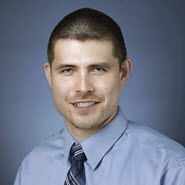Luke Dang, M.D., Ph.D.

Resident, PGY-4
Medical School:
University of Washington
Personal Interests:
Exploring the outdoors with my wife and our dogs.
Reason for Choosing UC Davis:
Collegial culture, supportive faculty, integrated curriculum, excellent opportunities for clinical training and independent research.
Clinical Interests:
- Dermatopathology
- Hematopathology
- Molecular Genetics
Research Interests:
- Protein Engineering and Computational Protein Design
- Machine Learning
- Development of Novel Diagnostics
CV Highlights / Brief Biography:
Dr. Dang graduated from Washington University in St. Louis with a B.A. in Biology and Chemistry. His undergraduate research in the laboratory of Dr. J. Evan Sadler investigated the complex molecular mechanism of von Willebrand Factor multimerization. He continued his training as a physician-scientist at the University of Washington, where he completed his M.D. and Ph.D in Molecular and Cellular Biology. At UW, Dr. Dang pursued his long-standing interest in protein structure and function in the laboratory of Dr. David Baker at the Institute for Protein Design. His graduate research utilized computational protein design methods to engineer repeat proteins as high-affinity, sub-type specific binders against Frizzled receptors for the modulation of Wnt signaling in scientific and therapeutic applications. Dr. Dang has authored publications in Nature, PNAS, Nature Molecular & Structural Biology, Cell Stem Cell and JBC and is an inventor on patents related to applications of his graduate research. His continued interest in the molecular mechanism of disease has led him to pursue comprehensive training in Anatomic and Clinical Pathology at UC Davis where he is currently involved in research projects in dermatopathology, laboratory medicine, and machine learning.
Publications:
Miao Y, Ha A, de Lau W, Yuki K, Santos AJM, You C, Geurts MH, Puschhof J, Pleguezuelos-Manzano C, Peng WC, Senlice R, Piani C, Buikema JW, Gbenedio OM, Vallon M, Yuan J, de Haan S, Hemrika W, Rösch K, Dang LT, Baker D, Ott M, Depeille P, Wu SM, Drost J, Nusse R, Roose JP, Piehler J, Boj SF, Janda CY, Clevers H, Kuo CJ, Garcia KC. Next-Generation Surrogate Wnts Support Organoid Growth and Deconvolute Frizzled Pleiotropy In Vivo. Cell Stem Cell. 2020 Nov 5;27(5):840-851.e6.
Chenoweth JA, Dang LT, Gao G, Tran NK. Acetaminophen interference with Nova StatStrip® Glucose Meter: case report with bench top confirmation. Clinical Toxicology (Phila). 2020 Nov;58(11):1067-1070.
Dang LT, Miao Y, Ha A, Yuki K, Park K, Janda CY, Jude KM, Mohan K, Ha N, Vallon M, Yuan J, Vilches-Moure JG, Kuo CJ, Garcia CK, Baker D. Receptor subtype discrimination using extensive shape complementary designed interfaces. Nature Structural & Molecular Biology. 2019 Jun;26(6): 407-414.
Moody JD, Levy S, Mathieu J, Xing Y, Kim W, Dong C, Tempel W, Robitaille AM, Dang LT, Ferreccio A, Detraux D, Sidhu S, Zhu L, Carter L, Xu C, Valensisi C, Wang Y, Hawkins RD, Min J, Moon RT, Orkin SH, Baker D, Ruohola-Baker H. First critical repressive H3K27me3 marks in embryonic stem cells identified using designed protein inhibitor. Proceedings of the National Academy of Sciences of the United States of America. 2017, Sep; 114(38): 10125–10130.
Janda CY*, Dang LT*, You C, Chang J, Lau W, Zhong ZA, Yan KS, Marecic O, Siepe D, Li X, Moody JD, Williams BO, Clevers H, Piehler J, Baker D, Kuo CJ, Garcia KC. Surrogate Wnts that phenocopy canonical Wnt/B-catenin signaling. Nature. 2017, May; 545(7653): 234-237. *Authors contribute equally to this work.
Dang LT, Purvis AR, Huang RH, Westfield LA, Sadler JE. Phylogenetic and functional analysis of histidine residues essential for pH-dependent multimerization of von Willebrand factor. Journal of Biological Chemistry. 2011, Jul; 286(29): 25763-25769.
LaFranzo NA, Strulson MK, Yanker DM, Dang LT, and Maurer JA. Sequence or structure: using bioinformatics and homology modeling to understand functional relationships in cAMP/cGMP binding domains. Molecular Biosystems. 2010, May; 6(5): 894-910.
Purvis AR, Gross J, Dang LT, Huang RH, Kapadia M, Townsend RR, and Sadler JE. Two Cys residues essential for von Willebrand factor multimer assembly in the Golgi. Proceedings of the National Academy of Sciences of the United States of America. 2007, Oct; 104(40): 15647-15652.

